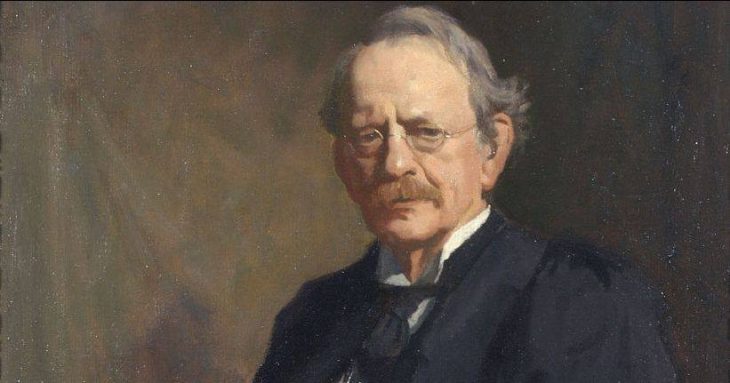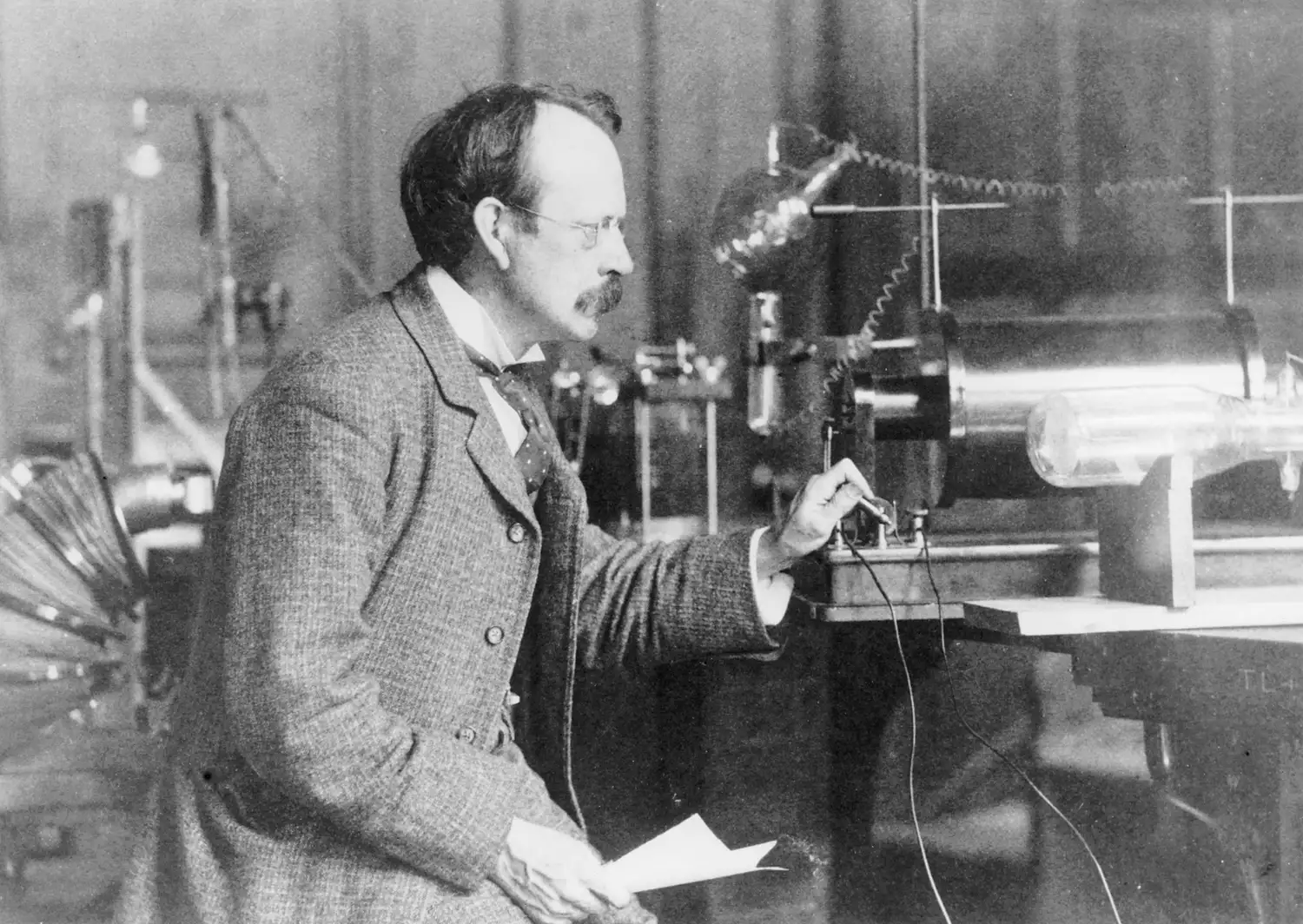
J.J. Thomson, born Joseph John Thomson, was a prominent physicist who made significant contributions to our understanding of the atomic structure and the nature of electrons. His groundbreaking experiments and discoveries paved the way for modern physics and earned him the prestigious Nobel Prize in Physics in 1906. In this article, we will delve into the fascinating world of J.J. Thomson and uncover 11 fun facts about his life, achievements, and contributions to science.
Discovering the Electron
One of J.J. Thomson’s most renowned achievements was his discovery of the electron. Through his experiments with cathode rays, he determined that these rays were composed of tiny, negatively charged particles. He named these particles “corpuscles,” which later became known as electrons. This groundbreaking discovery revolutionized our understanding of atomic structure and laid the foundation for future advancements in physics.
Plum Pudding Model
To explain the distribution of electrons within an atom, J.J. Thomson proposed the Plum Pudding Model. According to this model, the atom is composed of a positively charged sphere with negatively charged electrons embedded within it, resembling plums in a pudding. Although this model has been replaced by more accurate representations, it played a crucial role in shaping early atomic theories.
The Nobel Prize in Physics
In 1906, J.J. Thomson was awarded the Nobel Prize in Physics for his discovery of the electron and his research on the conduction of electricity in gases. This prestigious recognition solidified his position as a leading figure in the field of physics and highlighted the significance of his contributions to scientific knowledge.
Family of Scientists
J.J. Thomson came from a family with a strong scientific background. His father, Joseph James Thomson, was a successful engineer, and his older brother, Frederick Vernon Thomson, also pursued a career in engineering. This familial influence likely played a role in shaping J.J. Thomson’s early interest in scientific exploration and discovery.
Cambridge University Connection
J.J. Thomson’s scientific journey was closely tied to Cambridge University. He attended Trinity College, Cambridge, where he excelled in his studies and later became a professor of experimental physics. His work at the Cavendish Laboratory in Cambridge yielded groundbreaking experiments that shaped the course of modern physics.
Cathode Ray Tube Pioneer

Thomson’s work with cathode ray tubes was pioneering and instrumental in advancing our understanding of electrons. He designed and refined various types of cathode ray tubes, developing techniques to study their properties and behavior. His experiments with these tubes paved the way for later advancements in television and display technology.
Knighted by the Queen
In 1908, J.J. Thomson was knighted by Queen Victoria, recognizing his remarkable scientific achievements and contributions to society. The honor bestowed upon him further solidified his reputation as a distinguished physicist and acknowledged the significance of his discoveries.
Mentor to Ernest Rutherford
J.J. Thomson played a significant role as a mentor to the renowned physicist Ernest Rutherford. Thomson supervised Rutherford’s doctoral research at Cambridge, and their collaboration led to important advancements in understanding radioactivity and the structure of atoms. Rutherford later went on to conduct his groundbreaking gold foil experiment, which challenged the Plum Pudding Model and led to the development of the nuclear model of the atom.
Scientific Legacy
J.J. Thomson’s impact on the scientific community continues to be felt to this day. His discoveries and contributions laid the groundwork for the development of quantum mechanics and atomic theory. The insights gained from his research have led to numerous applications in modern technology, including electronics, telecommunications, and medical imaging.
Honorary Degrees and Recognitions
Throughout his career, J.J. Thomson received numerous honorary degrees and prestigious recognitions from universities and scientific societies worldwide. These accolades included honorary degrees from the University of Dublin, the University of Oxford, and the University of Glasgow, among others. His influence and contributions were widely recognized by his peers and the scientific community.
Personal Anecdote: Thomson’s Love for Music
Beyond his scientific pursuits, J.J. Thomson had a deep love for music. He played the viola and often performed with the Cambridge University Musical Society. His passion for music provided a creative outlet and balance to his scientific endeavors, showcasing the multidimensional nature of his interests and talents.
Conclusion
Through these 11 fun facts, we have explored the life and accomplishments of J.J. Thomson, shedding light on his groundbreaking discoveries, influential mentorship, and his multidimensional interests. Thomson’s contributions to the field of physics have left an indelible mark on scientific understanding and continue to inspire new generations of scientists.
Frequently Asked Questions (FAQs)
What was J.J. Thomson’s full name?
J.J. Thomson’s full name was Joseph John Thomson. He was commonly known as J.J. Thomson throughout his scientific career.
What other discoveries is J.J. Thomson known for?
In addition to discovering the electron, J.J. Thomson made significant contributions to the understanding of the conduction of electricity in gases, the nature of positive rays, and the development of the mass spectrometer.
How did J.J. Thomson’s discoveries contribute to modern physics?
Thomson’s discoveries, particularly the electron, revolutionized our understanding of atomic structure and laid the foundation for subsequent advancements in quantum mechanics and atomic theory.
Did J.J. Thomson have any notable students?
Yes, J.J. Thomson mentored several notable scientists, including Ernest Rutherford, who went on to conduct groundbreaking experiments and make significant contributions to the field of physics.
Are there any awards named after J.J. Thomson?
While there are no specific awards named after J.J. Thomson, his contributions and discoveries continue to be recognized and celebrated through various scientific honors and accolades.
Was this page helpful?
Our commitment to delivering trustworthy and engaging content is at the heart of what we do. Each fact on our site is contributed by real users like you, bringing a wealth of diverse insights and information. To ensure the highest standards of accuracy and reliability, our dedicated editors meticulously review each submission. This process guarantees that the facts we share are not only fascinating but also credible. Trust in our commitment to quality and authenticity as you explore and learn with us.
